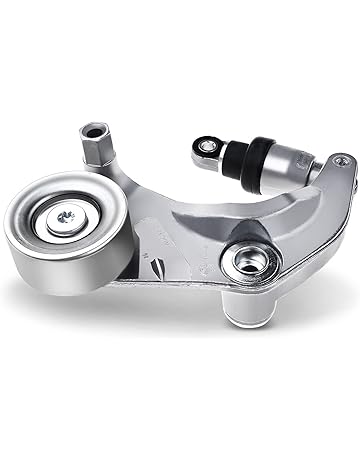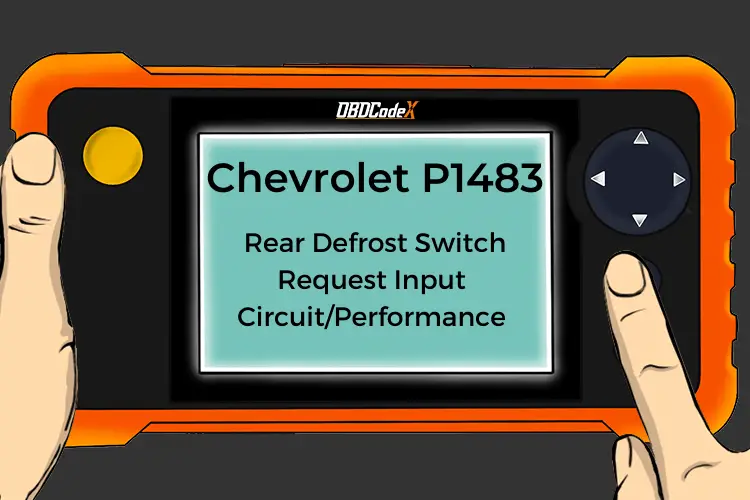P2181: Cooling System Performance
Is your scanner showing P2181?
No worries. We'll show you what it means and how to deal with it.
P2181: Cooling System Performance
OVERVIEWWhat Does The P2181 Code Mean?
Unlike most generic-computer fault codes that are relatively specific as to the items or area the fault occurred, code P2181 is vague to say the least. The fault is recognized and set if the engine temperature is out of range either too hot or cold.
What Are The Symptoms Of The P2181 Code?
- The engine temperature gauge indicates a higher or lower than normal temperature. If the vehicle has no temperature gauge it will have a “red” temperature warning light, which means the engine is already overheating and must be shut down immediately.
- In the event the gauge is faulty or goes unnoticed, an overheating engine will cause the coolant to boil producing steam, the radiator/tank will overflow, and in the critical stages the engine will begin to knock, lose power and finally seize.
- If the engine is running cold, the fuel mixture will be rich, resulting in poor fuel economy, the heater will not function well and the temperature gauge will indicate colder than normal. All engines are designed to expand to a predetermined point as they heat up. It is critical to maintain the proper operating temperature for proper sealing of the piston rings.
What Are The Potential Causes Of The P2181 Code?
Running too cool takes a backseat to overheating. The effects of running too cool happen over time and are correctable whereas overheating is always catastrophic if not corrected quickly. Just a few minutes of severe overheating and the engine will be destroyed.
Mild overheating usually results in a blown head gasket which is an expensive repair. Severe overheating will cause the pistons to expand faster than the cylinder block and seize in the cylinder bores for which there is no repair.
Procedures and Protocol
Due to the wide range of possibilities for overheating as the cause of code P2181, the following strategy will be employed. The flow of diagnostics will be used from an automotive technician’s viewpoint. It will begin with the most often encountered to the least.
Warning: Never open a radiator cap unless the engine is either barely warm or cold. The cooling system is under pressure and the common temperature is 195 degrees, and an overheating engine can exceed 280 degrees. Bodily harm in the form of third degree burns will definitely occur.
How Serious Is This P2181 Code?
We are aware that a flash update to the PCM on certain vehicles on the list below is a known fix where the P2181 code is erroneous: 2007-09 Chrysler Sebring and Dodge Avenger with the 2.7 and 3.5L engines, as well as 2008-09 Town & Country and Grand Voyager vans with the 3.3, 3.8, and 4.0L engines, plus the 2009 Dodge Journey and Challenger with the 2.7 and 3.5L engines, and the 2007-10 Chrysler Magnum with the 2.7 and 3.5L engines.
Also, a quick search on the ‘net shows this DTC seems to be more common on VW / Volkswagen vehicles but certainly is not limited to them.
How Can You Fix The P2181 Code?
Tools
Tools used in diagnosing overheating problems:
- Temperature scan tool
- Voltmeter
- Set of alligator jaw jumper wires
- Scan tool to clear the codes
- Coolant system pressure tester
- Service manual
Procedure
Engine running too cool:
- Replace the thermostat.
Engine overheating:
- Plug the code scanner into the OBD port and turn the key on. Check for any further codes. A coolant temperature sensor code will cause the radiator fans to malfunction.
- With the engine cold, remove the radiator cap and check the coolant level. With the pressure tester check for leaks in the system. This includes around the radiator, hoses, block, intake and heater core.
- If the engine temperature is normal while driving but overheats at a stop the radiator fan is malfunctioning.
- Check the serpentine belt-tension for proper tension. Defective belt tensioners are common and allow belt slip. Check around the water pump for leaks. For those driven by the timing belt, coolant leaks out of the bottom of the belt cover. If the water pump is exposed, check the pulley for wobble indicating a worn water pump bushing.
- Check an engine driven fan for wobbling and leakage around the fan clutch. Rotate the fan by hand. A good fan clutch offers some resistance. A exceptionally slow moving fan with the engine running indicates a bad fan clutch.
- Check the coolant level sensor on the side of the radiator referring to the service manual.
- If the vehicle has a radiator cap leave it off and start the engine and allow it to warm. Monitor the engine temperature with the scan tool and as the temperature approaches 190 degrees watch for coolant to begin flowing from the inside radiator cores. If no flow is detected above 195 degrees, replace the cap and shut off the motor. The thermostat is defective.
- If the radiator begins to flow, replace the cap and allow the engine to reach 205 degrees before shutting it off. If the electric fans do not come on, shut the engine off.
- Check the engine fan fuse and relays in the fuse and relay box on the driver’s side fenderwell. Their location is listed on the underside of the cover.
- Check the operation of the fan by disconnecting the wiring pigtail. Place a jumper from the ground terminal to a good ground and power terminal to the battery. If the fan fails to operate replace it. If it operates, check the wiring at the fuse block and coolant temperature sensor for loose connections, pushed out connector pins or burnt wiring.
- Check for a blown head gasket
Other cooling system related DTCs: P0115, P0116, P0117, P0118, P0119, P0125, P0126, P0128, P0217.
Recommended Parts
Below are some recommended auto parts to help you address the trouble code affecting your vehicle and get it running smoothly again:
Note: During the purchasing process, please check carefully whether the part you want to buy fits your car!
Check This Video For Reference
Reference Sources
P2181 Cooling System Performance Code, OBD-Codes.











